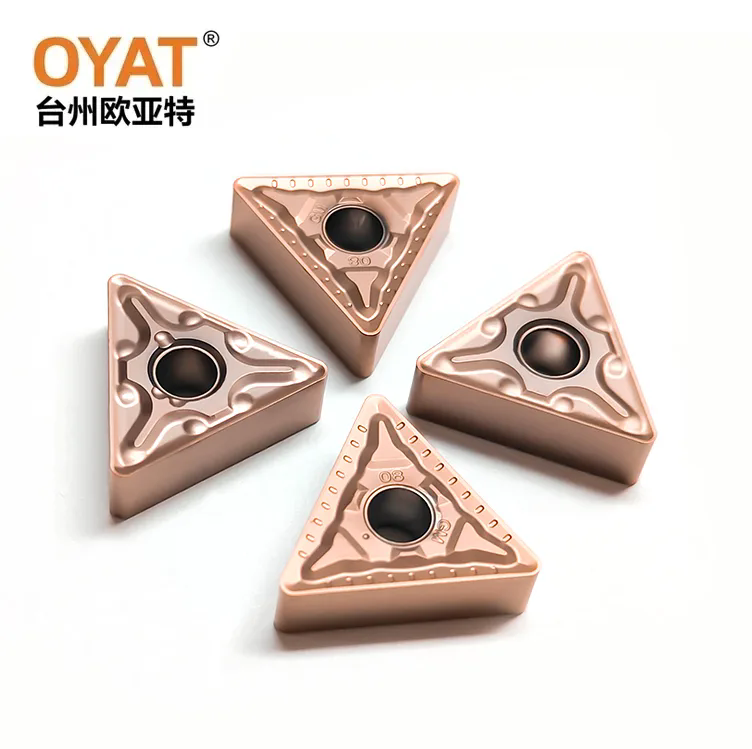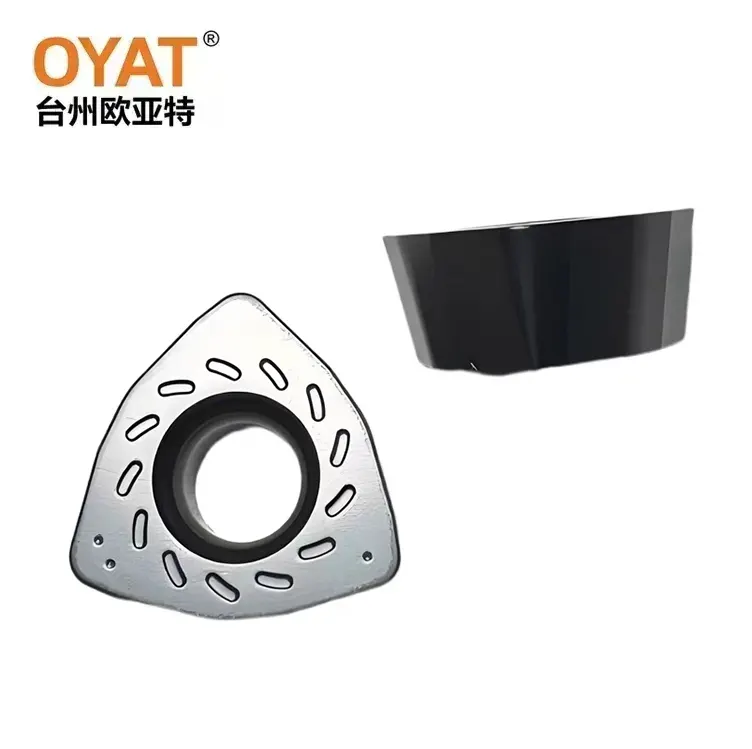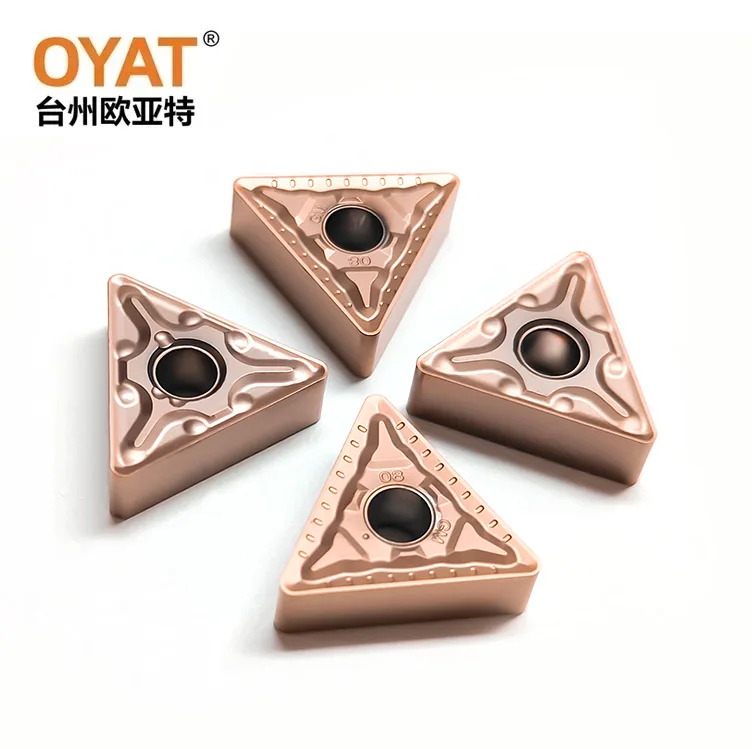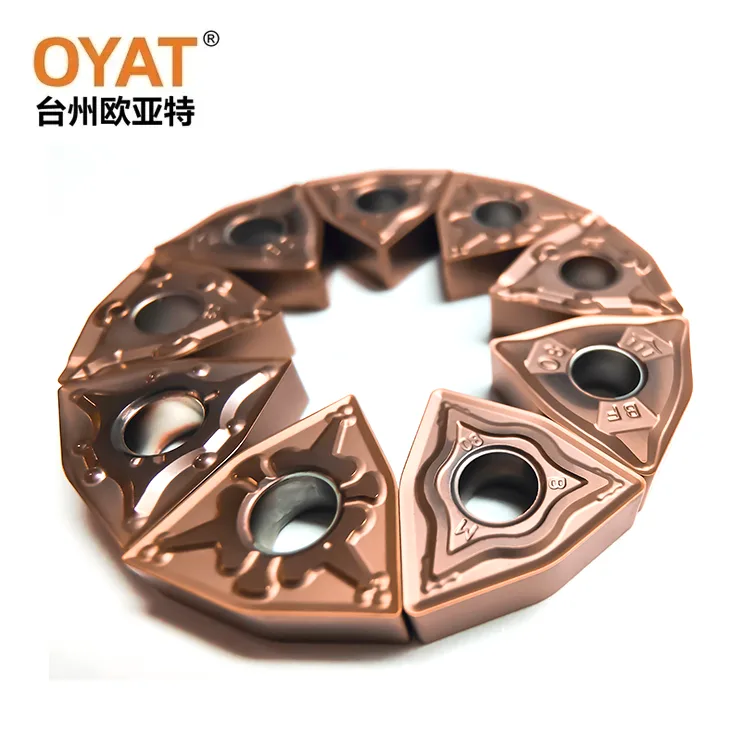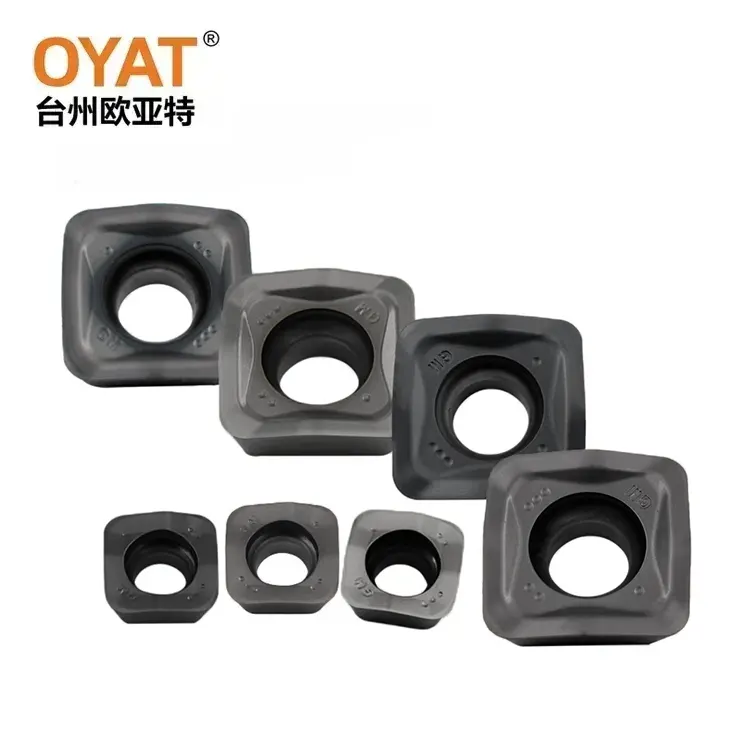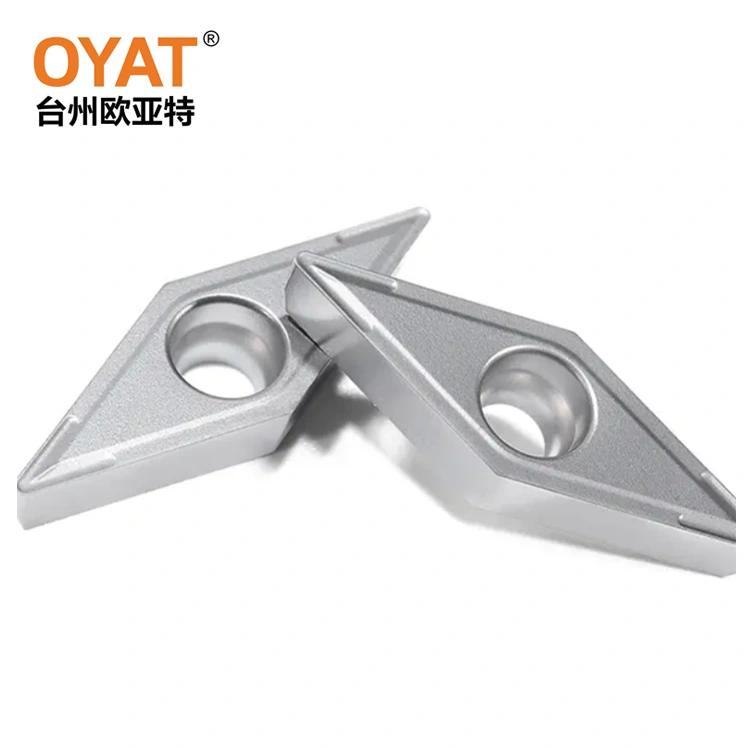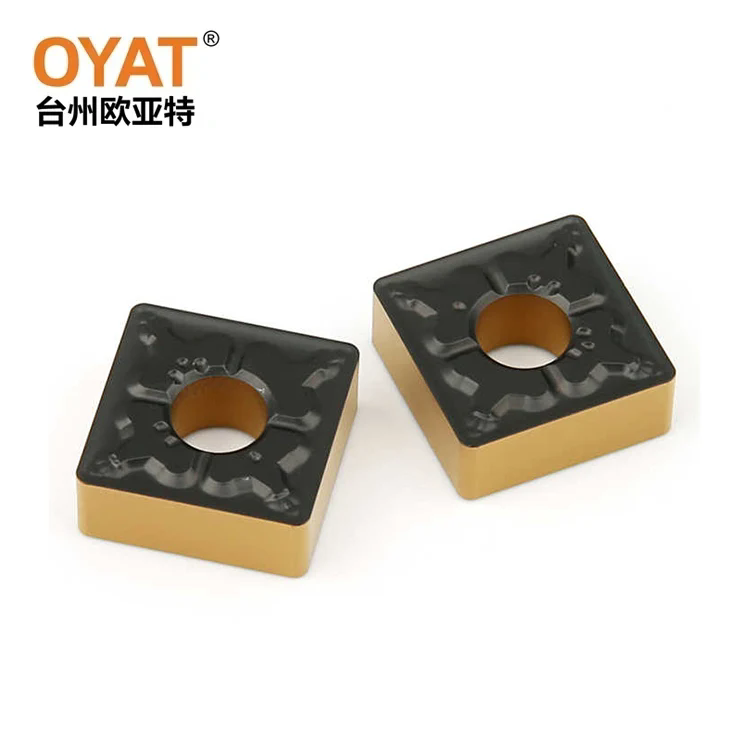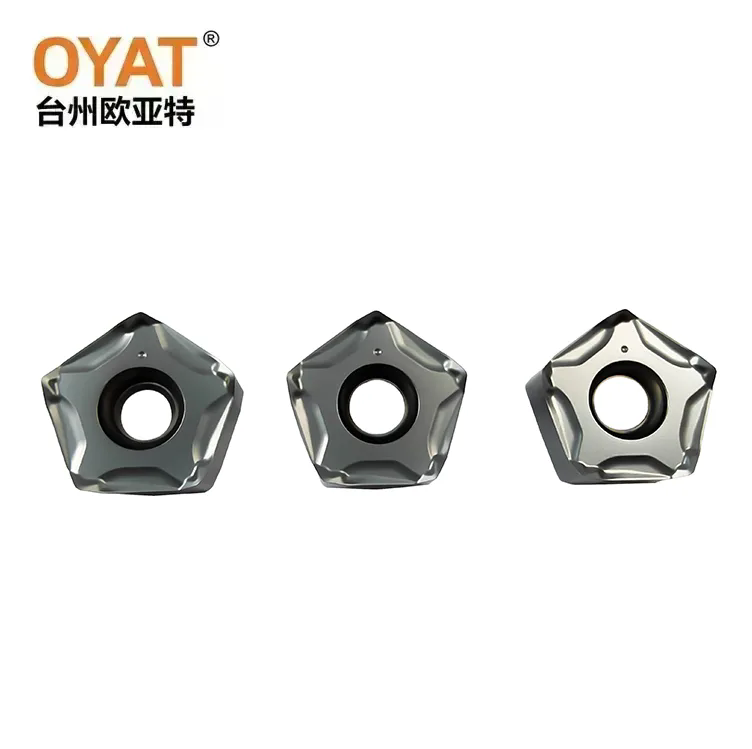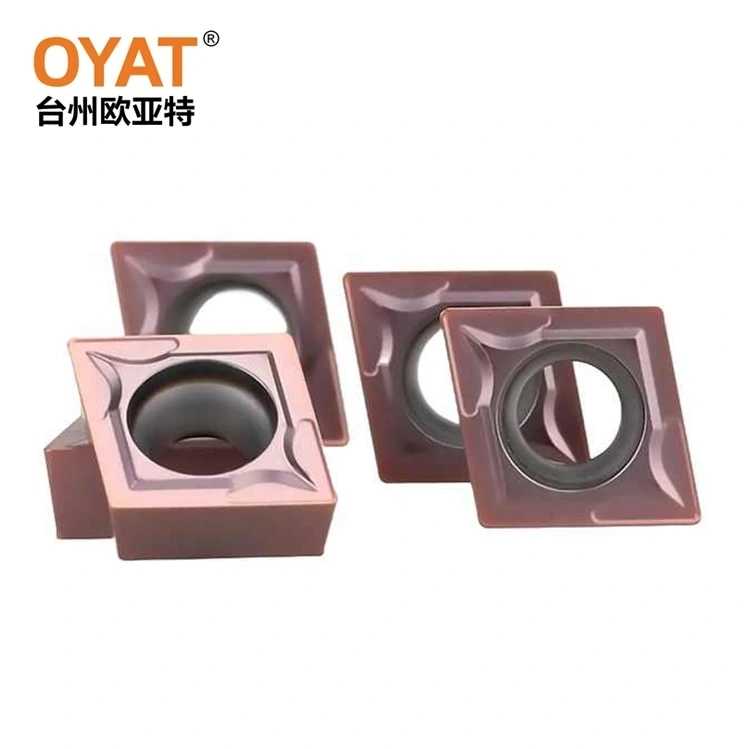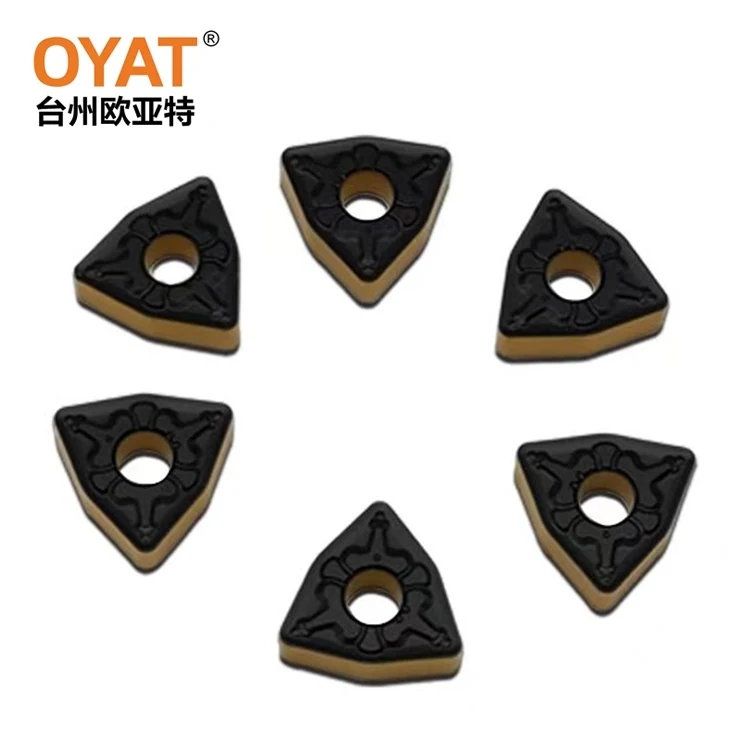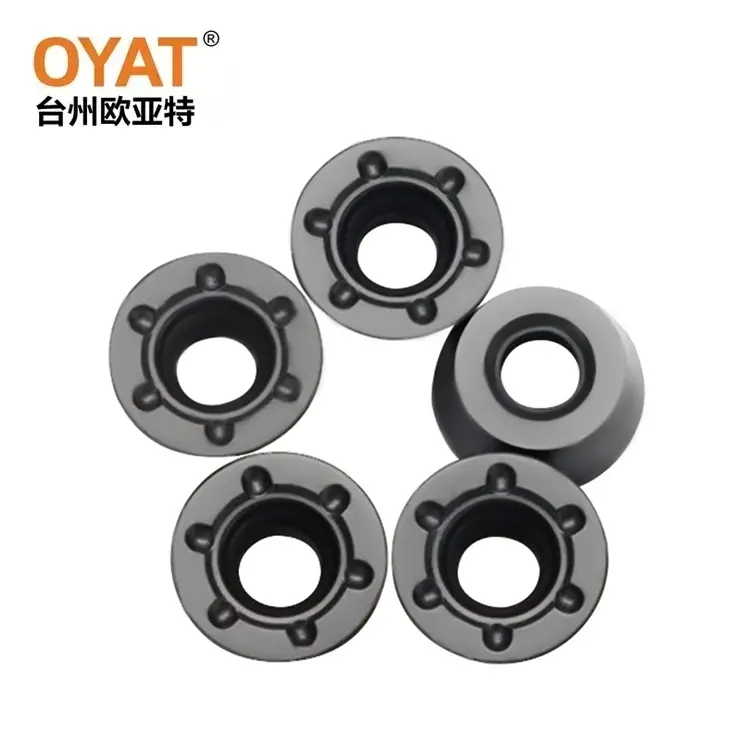Email Us
What Makes High-Quality Turning Inserts Essential for Precision Machining?
In the world of manufacturing and metalworking, precision, efficiency, and cost-effectiveness are paramount. Turning inserts, small but critical components used in lathes and turning machines, play a pivotal role in shaping metal workpieces with accuracy. From creating intricate parts for aerospace engineering to producing everyday industrial components, these inserts determine the quality of the final product, the speed of production, and the overall profitability of machining operations. As industries demand higher precision and faster turnaround times, understanding why high-quality turning inserts are indispensable has become crucial for manufacturers. This guide explores the key role of turning inserts in machining, highlights their essential features, provides detailed specifications of our premium offerings, and answers common questions to help businesses optimize their operations.
Trending News Headlines: Top Searches on Turning Inserts
- "How Coated Turning Inserts Improve Tool Life and Precision"
- "Eco-Friendly Turning Inserts: Reducing Waste in Manufacturing"
These headlines underscore the priorities of manufacturers: durability for heavy workloads, advancements in coating technologies to enhance performance, and a growing shift toward sustainability. For businesses, staying updated on these trends is key to selecting turning inserts that meet modern machining demands.
Why High-Quality Turning Inserts Matter in Machining
Turning inserts are replaceable cutting tools that mount onto lathe tools to remove material from a rotating workpiece, shaping it into the desired form. The quality of these inserts directly impacts every aspect of the machining process. Here’s why investing in high-quality turning inserts is essential:
Precision and Accuracy
In industries like aerospace, automotive, and medical device manufacturing, even the smallest deviation from specifications can lead to product failures or safety risks. High-quality turning inserts are engineered with tight tolerances, ensuring consistent cuts and precise dimensions. Their sharp, well-defined cutting edges minimize vibrations and chatter, resulting in smooth surface finishes and accurate part geometries. For example, a turning insert with a precision-ground cutting edge can maintain a dimensional accuracy of ±0.001 inches, critical for producing parts that fit together seamlessly.
Extended Tool Life
Low-quality turning inserts wear out quickly, requiring frequent replacements that disrupt production schedules and increase costs. High-quality inserts, made from premium materials and featuring advanced coatings, resist wear, heat, and chemical degradation, significantly extending their lifespan. For instance, inserts coated with titanium carbonitride (TiCN) or aluminum oxide (Al₂O₃) can withstand high cutting temperatures, reducing flank wear and allowing for longer machining runs. This extended tool life not only reduces downtime but also lowers the total cost of ownership by minimizing the need for new inserts.
Increased Productivity
Time is money in manufacturing, and high-quality turning inserts enable faster cutting speeds and feed rates without compromising precision. Their robust construction and heat resistance allow machinists to operate at higher parameters, reducing cycle times per part. For example, a high-performance insert might handle a cutting speed of 300 surface feet per minute (SFM) compared to 200 SFM for a lower-quality alternative, increasing production output by 50% for the same period. Additionally, fewer tool changes mean less downtime, keeping machines running at optimal capacity.
Versatility Across Materials
Modern manufacturing involves machining a wide range of materials, from soft metals like aluminum to hard alloys like stainless steel and titanium. High-quality turning inserts are designed to handle diverse materials, with specialized geometries and coatings tailored to specific applications. For example, an insert with a positive rake angle is ideal for machining aluminum, reducing cutting forces and preventing built-up edge (BUE), while a negative rake angle insert with a tough carbide substrate works better for stainless steel, resisting chipping and wear. This versatility eliminates the need for multiple insert types, simplifying inventory management and reducing setup times.
Cost Efficiency
While high-quality turning inserts may have a higher upfront cost, they deliver long-term savings through extended tool life, reduced downtime, and improved productivity. For example, a premium insert that costs twice as much as a budget option but lasts five times longer results in lower overall costs. Additionally, the precision of high-quality inserts reduces scrap rates, as fewer parts are rejected due to poor quality or dimensional errors. Over time, these factors make high-quality inserts a cost-effective choice for businesses looking to optimize their machining operations.
Key Features of Premium Turning Inserts
Material Composition
The substrate material of a turning insert determines its hardness, toughness, and heat resistance:
- Carbide (cemented carbide): The most common material, offering a balance of hardness and toughness. Tungsten carbide (WC) inserts with cobalt (Co) binders are widely used for general-purpose machining.
- Cermets: Combinations of ceramic and metal, providing high wear resistance and edge strength, ideal for high-speed machining of steels.
- Ceramics: Aluminum oxide (Al₂O₃) or silicon nitride (Si₃N₄) inserts, designed for high-temperature machining of superalloys and cast irons.
- Cubic Boron Nitride (CBN): Extremely hard, used for machining hardened steels (HRC 50+) and cast irons.
Coatings enhance insert performance by reducing friction, dissipating heat, and resisting wear:
- Titanium Nitride (TiN): Gold-colored coating that improves lubricity and wear resistance, suitable for low to medium cutting speeds.
- Titanium Carbonitride (TiCN): Harder than TiN, with better adhesion to the substrate, ideal for high-speed machining of steels.
- Aluminum Oxide (Al₂O₃): Heat-resistant coating that protects against oxidation, used for high-temperature applications.
- Diamond (CVD Diamond): Extremely hard, used for machining non-ferrous materials like aluminum, copper, and composites.
The shape and design of the cutting edge influence chip formation, cutting forces, and surface finish:
- Rake Angle: Positive angles reduce cutting forces (good for soft materials), while negative angles increase edge strength (good for hard materials).
- Clearance Angle: Prevents the insert from rubbing against the workpiece, reducing wear.
- Nose Radius: Affects surface finish and tool life; larger radii improve finish but increase cutting forces.
- Chip Breakers: Grooves or protrusions that control chip flow, preventing chip entanglement and improving safety.
Turning inserts come in various sizes and styles to fit different tool holders and applications:
- ISO Standard Shapes: Common shapes include triangular (TNMG), square (SNMG), diamond (CNMG), and round (RNMG).
- Size Codes: Indicated by a number (e.g., TNMG 160408), representing insert length, thickness, and nose radius.
- Mounting Style: Clamped or brazed; clamped inserts are replaceable, while brazed inserts are permanently attached to the tool holder.
Our Premium Turning Inserts Specifications
|
Feature
|
General Purpose Carbide Inserts (GC Series)
|
High-Speed Steel Turning Inserts (HS Series)
|
Hard Material Machining Inserts (HM Series)
|
|
Substrate Material
|
Tungsten carbide with 6% cobalt binder
|
Titanium carbonitride (TiCN) coated carbide
|
Cubic boron nitride (CBN) with ceramic binder
|
|
Coating
|
TiCN + Al₂O₃ double layer
|
TiN single layer
|
Uncoated (polished surface)
|
|
ISO Shape
|
TNMG, SNMG, CNMG, RNMG
|
TNMG, CNMG
|
DNMG, SNMG
|
|
Nose Radius
|
0.4mm, 0.8mm, 1.2mm, 1.6mm
|
0.4mm, 0.8mm
|
0.2mm, 0.4mm, 0.8mm
|
|
Rake Angle
|
Positive (6°)
|
Positive (3°)
|
Negative (-5°)
|
|
Clearance Angle
|
7°
|
5°
|
7°
|
|
Recommended Cutting Speed
|
100-300 SFM (steel), 200-500 SFM (aluminum)
|
80-250 SFM (steel), 150-400 SFM (cast iron)
|
50-200 SFM (hardened steel), 80-300 SFM (cast iron)
|
|
Maximum Workpiece Hardness
|
35 HRC
|
40 HRC
|
65 HRC
|
|
Tool Life (Average)
|
60-120 minutes (depending on material)
|
45-90 minutes (depending on material)
|
30-80 minutes (depending on material)
|
|
Applications
|
General machining of steels, aluminum, cast iron
|
High-speed machining of steels, cast iron
|
Machining hardened steels, superalloys, chilled cast iron
|
|
Compatibility
|
Universal (fits most standard tool holders)
|
Universal (fits most standard tool holders)
|
Specialized tool holders for CBN inserts
|
|
Size Range
|
12mm, 16mm, 19mm, 25mm insert sizes
|
12mm, 16mm, 19mm insert sizes
|
12mm, 16mm insert sizes
|
|
Price Range
|
\(8.50 - \)15.99 per insert
|
\(6.99 - \)12.50 per insert
|
\(25.00 - \)45.00 per insert
|
All our turning inserts undergo rigorous testing to ensure they meet strict quality standards. We use advanced manufacturing techniques to achieve tight tolerances, and each insert is inspected for edge sharpness, coating adhesion, and dimensional accuracy. Our commitment to quality ensures that our inserts consistently deliver reliable performance, helping manufacturers improve productivity and reduce costs.
FAQ: Common Questions About Turning Inserts
- What Makes SPMT050204-DG Drilling Inserts a Game-Changer in Precision Machining?
- What Are V-type Turning Inserts and Why Should You Choose Them?
- What Makes Milling Inserts the Key to Precision and Productivity?
- TNMG type triangle cutting insert: precision design, high efficiency and multi-function.
- How to Choose the Right Drilling Inserts for Precision Machining
- Why Are Turning Inserts the Game-Changer in Modern Machining?
Contact Us
Jiangnan Village, Jiangkou Street, Huangyan District, Taizhou City, Zhejiang Province, China
Copyright © 2025 Taizhou Ouyate Tools Co., Ltd. All Rights Reserved. Powered by Qixin Cloud


